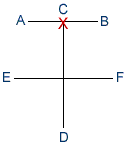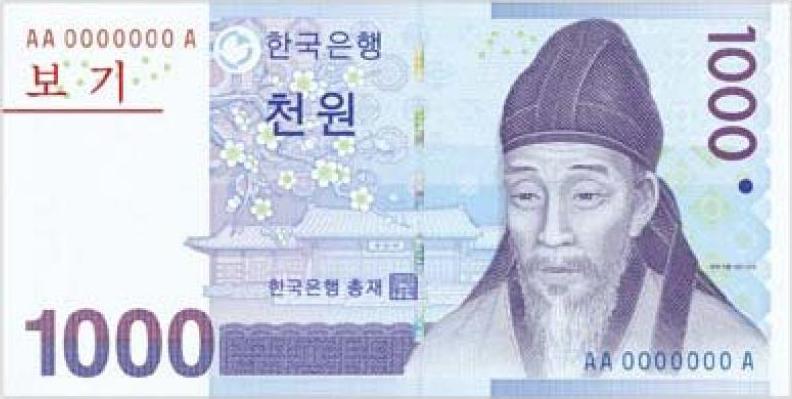Toi-Gye

Toi-Gye (37 movements)
Toi-Gye is the pen name of the noted scholar Yi Hwang (16th century), an authority
on neo Confucianism. The 37 movements of the pattern refer to his birthplace on
37 latitude, the diagram represents " scholar".
Download Instructions with competition
notes in PDF format
Ready Posture - CLOSED READY STANCE B
-
Move the left foot to B forming a right L-stance toward B while executing a middle
block to B with the left inner forearm.
-
Execute a low thrust to B with the right upset finger tip while forming a left walking
stance toward B, slipping the left foot to B.
-
Bring the left foot to the right foot to form a closed stance toward D while executing
a side back strike to C with the right back fist, extending the left arm to the
side downward. Perform in slow motion.
-
Move the right foot to A forming a left L-stance toward A while executing a middle
block to A with the right inner forearm.
-
Execute a low thrust to A with the left upset finger tip while forming a right walking
stance toward A, slipping the right foot to A.
-
Bring the right foot to the left foot to form a closed stance toward D while executing
a side back strike to C with the left back fist, extending the right arm to the
side downward. Perform in slow motion.
-
Move the left foot to D forming a left walking stance toward D while executing a
pressing block with an X-fist.
-
Execute a high vertical punch to D with a twin fist while maintaining a left walking
stance toward D. Perform 7 and 8 in a continuous motion.
-
Execute a middle front snap kick to D with the right foot, keeping the position
of the hands as they were in 8.
-
Lower the right foot to D forming a right walking stance toward D while executing
a middle punch to D with the right fist.
-
Execute a middle punch to D with the left fist while maintaining a right walking
stance toward D.
-
Bring the left foot to the right foot forming a closed stance toward F while executing
a twin side elbow thrust. Perform in slow motion.
-
Move the right foot to F in a stamping motion forming a sitting stance toward C
while executing a W-shape block to C with the right outer forearm.
-
Move the left foot to F in a stamping motion turning clockwise to form a sitting
stance toward D while executing a W-shape block to D with the left outer forearm.
-
Move the left foot to E in a stamping motion turning clockwise to form a sitting
stance toward C while executing a W-shape block to C with the left outer forearm.
-
Move the right foot to E in a stamping motion turning counter clockwise to form
a sitting stance toward D while executing a W-shape block to D with the right outer
forearm.
-
Move the left foot to E in a stamping motion turning clockwise to form a sitting
stance toward C while executing a W-shape block to C with the left outer forearm.
-
Move the left foot to F in a stamping motion turning clockwise to form a sitting
stance toward D while executing a W-shape block to D with the left outer forearm.
-
Bring the right foot to the left foot and then move the left foot to D forming a
right L-stance toward D while executing a low pushing block to D with the left double
forearm.
-
Extend both hands upward as if to grab the opponent's head while forming a left
walking stance toward D, slipping the left foot to D.
-
Execute an upward kick with the right knee while pulling both hands downward.
-
Lower the right foot to the left foot and then move the left foot to C forming a
right L-stance toward C while executing a middle guarding block to C with a knife-hand.
-
Execute a low side front snap kick to C with the left foot, keeping the position
of the hands as they were in 22.
-
Lower the left foot to C forming a left walking stance toward C while executing
a high thrust to C with the left flat finger tip.
-
Move the right foot to C forming a left L-stance toward C while executing a middle
guarding block to C with a knife-hand.
-
Execute a low side front snap kick to C with the right foot, keeping the position
of the hands as they were in 25.
-
Lower the right foot to C forming a right walking stance toward C while executing
a high thrust to C with the right flat finger tip.
-
Move the right foot to D forming a right L-stance toward C while executing a side
back strike to D with the right back fist and a low block to C with the left forearm.
-
Jump to C forming a right X-stance toward A while executing a pressing block with
an X-fist.
Ki-Hap
-
Move the right foot to C forming a right walking stance toward C while executing
a high block to C with the right double forearm.
-
Move the left foot to B forming a right L-stance toward B while executing a low
guarding block to B with a knife-hand.
-
Execute a circular block to BD with the right inner forearm while forming a left
walking stance toward B, slipping the left foot to B.
-
Bring the left foot to the right foot and then move the right foot to A forming
a left L-stance toward A, at the same time executing a low guarding block to A with
a knife-hand.
-
Execute a circular block to AD with the left inner forearm while forming a right
walking stance toward A, slipping the right foot to A.
-
Execute a circular block to CE with the right inner forearm while forming a left
walking stance toward CE.
-
Execute a circular block to AD with the left inner forearm while forming a right
walking stance toward A.
-
Move the right foot on line AB to form a sitting stance toward D while executing
a middle punch to D with the right fist.
END: Bring the right foot back to a ready posture.
The History Behind "Toi-Gye"
Yi Hwang, pronounced "EE-wang", best known by his honorific name Toi-gye ("Retreating
Creek"), is one of the two most honored thinkers of the Korean Neo-Confucian tradition,
the other being his younger contemporary Yi I (Yul-gok, "Chestnut Valley").
Neo-Confucianism was a moral, ethical, and metaphysical Chinese philosophy influenced
by Confucianism. It was an attempt to create a more rationalist and secular form
of Confucianism by rejecting superstitious and mystical elements of Taoism and Buddhism
while adding attention to spiritual and intellectual growth. Neo-Confucianism would
quickly spread across East Asia and become a basis for philosophical teachings in
the West.
Neo-Confucianism was the official state ideology at the foundation of the Chosen
dynasty in 1392. It was adopted as a response to disillusionment with the excesses
of organized religion (in the form of Buddhism) and of the old nobility. An attempt
was made to transform Chosen into the ideal neo-Confucian society with a series
of radical reforms. Neo-Confucianism in the Chosen Dynasty became so dogmatic in
a relatively rapid time that it prevented much needed socio-economic development
and change, and led to internal divisions and tremendous social upheavals. By the
time of Yi-Hwangs's birth in 1501, these upheavals resulted in many bloody clashes
and purges.
Yi Hwang's comprehensive grasp of Neo-Confucian thought help bring balance between
the opposing factions grew – especially with regards to the conduct of government
and the ordering of society. He wrote the Ten Diagrams on Sage Learning (Songhak
sipdo), which became one of the most famous and influential works of Korean Neo-Confucianism.
Yi Hwang contributions to Korean society has been recognized in many ways, including
having his image on the 1,000 won note.
